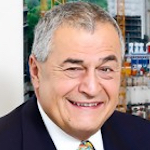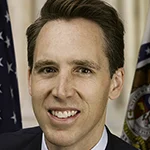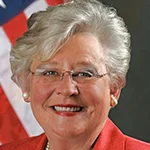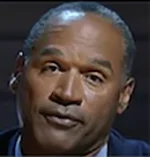 |
| Tony Podesta |
“If you want something done in Washington, DC, you go to Tony Podesta,” boasts podesta.com.
China’s Huawei Technologies, which is battling US sanctions, apparently agrees. It reportedly hired Podesta, whose firm imploded in 2017 as it was caught in the federal investigation of former president Trump’s ties to Russia.
The media though have always had a soft spot in their hearts for Tony.
He was dubbed one of DC’s “50 heavy lifters” (Financial Times), “one of Washington’s biggest players” (New York Times), “Washington super lobbyist” (Bloomberg Businessweek), “The Lobbyist” (Newsweek) and “a king of K Street” (Politico).
Can the now 77-year-old Podesta regain his crown? Don’t bet against it.
Ditch the PR guy, says a coalition of journalism groups in a letter to Alondra Nelson and Jane Lubchenco, deputy directors of the White House’s office of science and technology policy.
The Coalition says its members' efforts to get honest and timely answers from government agencies is “intentionally hindered” by the ham-fisted media policy of the Biden administration.
The Government hinders the media by “barring government scientists, issue specialists and other government employees from communicating directly with reporters and even refusing to allow interviews of such scientists or specialists even with oversight by a public information officer.”
The Coalition understands that “sometimes some information must remain confidential and the public information officers can be and are often helpful to journalists.”
They would like to see the elimination of restrictions on employees speaking to reporters without notification of authorities; allowing credentialed journalists to enter, without escort, any area of federal facilities where most employees are allowed; and establishing a standard policy that when reporters voluntarily contact public information offices, they are allowed to speak to the people they request.
The Coalition of 25 groups includes Society of Professional Journalists, Radio Television Digital News Assn., National Newspaper Assn., National Writers Union, Tully Center for Free Speech, Society of Environmental Journalism and SABEW—Assn. of Business Journalists.
It warns: “Agencies that control the public scrutiny of themselves can develop critical weaknesses and be subject to political interference.”
The media stir the COVID-19 misinformation stew by covering each change of guidance from the Centers of Disease Control and Prevention as a major policy reversal.
The New York Times, for instance, led off its July 28 story about the CDC’s updated recommendation that COVID-19 vaccinated people should wear masks indoors in areas where the virus is surging, as a reversal of a decision “made just two months ago.”
Readers could get the impression that the CDC is a knee-jerk operation, issuing guidance in a willy-nilly fashion. That coverage undermines the credibility of the CDC.
Science is not static. When the CDC dropped its indoor mask mandate for vaccinated people in May, the Delta variant of the virus had not yet emerged as a threat.
That variant, which is a highly transmissible strain, now accounts for nearly all the COVID-19 hospitalizations in the US. Mask up, America.
Facts change. Science must adjust to new realities and so does journalism.
Dr. Anthony Fauci hailed the CDC’s new guidance. “I don’t think this is just flip-flopping back and forth,” he said. “They’re dealing with new information that science is providing.”
More mutations of COVID-19 are on the way. They will necessitate the CDC to issue more revisions and updates.
The media need to update their coverage of the CDC.


 Republican tough guys Josh Hawley and Tom Cotton want Biden to send the National Guard to Columbia University to put an end to student protests... Bernie blasts Bibi for insulting America's intelligence by equating criticism of Israel's government with antisemitism... German court convicts former financial PR exec who claims he wasn't aware that trading on tips is illegal.
Republican tough guys Josh Hawley and Tom Cotton want Biden to send the National Guard to Columbia University to put an end to student protests... Bernie blasts Bibi for insulting America's intelligence by equating criticism of Israel's government with antisemitism... German court convicts former financial PR exec who claims he wasn't aware that trading on tips is illegal.  Southern governors claim they know what's best for their working class, and it's not pay raises... A Ukrainian human rights group played a key role in convincing House Speaker Mike Johnson to hold a vote to send arms to Ukraine, Israel and Taiwan... Trump Media & Technology Group blames short-selling and not lousy outlook for its stock slump.
Southern governors claim they know what's best for their working class, and it's not pay raises... A Ukrainian human rights group played a key role in convincing House Speaker Mike Johnson to hold a vote to send arms to Ukraine, Israel and Taiwan... Trump Media & Technology Group blames short-selling and not lousy outlook for its stock slump. The techniques deployed by OJ Simpson's defense team in the 'trial of the century' served as a harbinger for those used by Donald Trump... People worry about the politicization of medical science just as much as they fret about another pandemic, according to Edelman Trust Barometer... Book bans aren't restricted to red states as deep blue Illinois, Connecticut and Maryland challenged at least 100 titles in 2023.
The techniques deployed by OJ Simpson's defense team in the 'trial of the century' served as a harbinger for those used by Donald Trump... People worry about the politicization of medical science just as much as they fret about another pandemic, according to Edelman Trust Barometer... Book bans aren't restricted to red states as deep blue Illinois, Connecticut and Maryland challenged at least 100 titles in 2023. The NBA, which promotes legalized gambling 24/7, seems more than hypocritical for banning player for placing bets... Diocese of Brooklyn promises to issue press release the next time one of its priests is charged with sexual abuse... Truth Social aspires to be one of Donald Trump's iconic American brands, just like Trump University or Trump Steaks or Trump Ice Cubes.
The NBA, which promotes legalized gambling 24/7, seems more than hypocritical for banning player for placing bets... Diocese of Brooklyn promises to issue press release the next time one of its priests is charged with sexual abuse... Truth Social aspires to be one of Donald Trump's iconic American brands, just like Trump University or Trump Steaks or Trump Ice Cubes. Publicis Groupe CEO Arthur Sadoun puts competition on notice... Macy's throws in the towel as it appoints two directors nominated by its unwanted suitor... The Profile in Wimpery Award goes to the Ford Presidential Foundation for stiffing American hero and former Wyoming Congresswoman Liz Cheney.
Publicis Groupe CEO Arthur Sadoun puts competition on notice... Macy's throws in the towel as it appoints two directors nominated by its unwanted suitor... The Profile in Wimpery Award goes to the Ford Presidential Foundation for stiffing American hero and former Wyoming Congresswoman Liz Cheney.


 Have a comment? Send it to
Have a comment? Send it to 
Jul. 29, 2021, by Thinkman2
Re: Podesta, of course you are right, and not just about him. What many influence peddlers who may call themselves PR firms, Public Affairs etc, really have their hooks into important relationships and the money can move the influence though seldom directly.